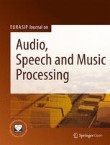The use of robots and drones is increasing rapidly in these years due to their capability of solving problems in an efficient and safe way. This includes automated industrial production, autonomous inspection, search and rescue operations, etc. The use of audio and audio signal processing in such robot and drone applications has a huge, but yet unresolved, potential. Compared to other common sensing technologies that give spatial awareness to robots and drones, audio can be used to localize sound sources and physical boundaries without being affected by, e.g., a limited field-of-view or changing light conditions. Moreover, audio is a natural modality for facilitating interaction between humans and robots or drones. While having a great potential, the use and processing of audio in robotics is still, to a great extent, unexplored territory. One of the reasons for this is that the use of audio in robotics introduces a number of unique and challenging problems, which have not been addressed within the traditional audio signal processing applications. This includes the detrimental presence of strong ego- and wind noise and constantly moving platforms prohibiting stationarity assumptions. This gives rise to new research problems within audio signal processing that needs to be addressed to foster and enable the use of audio in robot and drone applications.
Audio has great potential in these applications, e.g., for video capturing, search and rescue operations, surveillance, autonomous inspection, indoor navigation, human-robot/drone interaction, collision detection, etc. However, the use of audio in robot and drone applications also introduces many unique and challenging research problems compared to traditional audio applications that need to be addressed.
The purpose of this special issue is therefore to provide a platform for the ongoing research within
audio signal processing for robots and drones, to strengthen the synergy and advancing the research in and between its related topics.
Topics of interest include but are not limited to:
- Acoustic reflector and geometry estimation
- Ego-noise suppression
- Acoustic source tracking
- Wind noise reduction
- Distributed audio processing
- Audio-based echolocation
- Audio and speech enhancement
- Time of arrival and distance estimation
- Direction and distance estimation
- Collision detection and avoidance
Submission Instructions
Before submitting your manuscript, please ensure you have carefully read the submission guidelines for EURASIP Journal on Audio, Speech, and Music Processing. The complete manuscript should be submitted through the EURASIP Journal on Audio, Speech, and Music Processing submission system. To ensure that you submit to the correct special issue please select the appropriate special issue in the drop-down menu upon submission. In addition, indicate within your cover letter that you wish your manuscript to be considered as part of the special issue on Advances in Audio Signal Processing for Robots and Drones. All submissions will undergo rigorous peer review and accepted articles will be published within the journal as a collection.
Deadline for submissions: 1 February 2020
Lead Guest Editor
Jesper Rindom Jensen, Audio Analysis Lab, CREATE, Aalborg University, Denmark
Guest Editor
Antoine Deleforge, MULTISPEECH, Inria Nancy, France
Submissions will also benefit from the usual advantages of open access publication:
- Rapid publication: Online submission, electronic peer review and production make the process of publishing your article simple and efficient
- High visibility and international readership in your field: Open access publication ensures high visibility and maximum exposure for your work - anyone with online access can read your article
- No space constraints: Publishing online means unlimited space for figures, extensive data and video footage
- Authors retain copyright, licensing the article under a Creative Commons license: articles can be freely redistributed and reused as long as the article is correctly attributed
Sign up for article alerts to keep updated on articles published in EURASIP Journal on Audio, Speech, and Music Processing - including articles published in this special issue!
